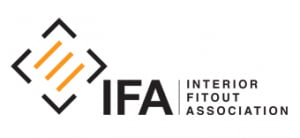Horrendous injuries to children from retail shopping hooks
Channel Nine has reported on a spate of horrific injuries to small children and toddlers, following falls onto shopping rack and hooks in retailers including Target and K-Mart.
Several children have had to have emergency and reconstructive surgery to their eyes after colliding with metal hooks when they’ve fallen over or bent to collect an item off the floor, leaving them with catastrophic injuries.
The investigation by the television network has uncovered a range of incidents across various retailers and has led leading ophthalmologists to warn that placing any type of hook or rack at small children’s height is clearly fraught with danger. The potential for severe and permanent damage is incredibly high.
It would appear some retailers are beginning to make changes with the way they design and fit out their displays but the industry as a whole has been slow to follow.
Designers and shopfitters have a responsibility to ensure their installations are as safe as possible, not just for workers but also shoppers, of all sizes.
One of the five national priorities in the Australian Work Health and Safety Strategy 2012-22, safety in design aims to prevent injuries by considering hazards as early as possible in the planning and design process, which includes design of plant, structures, substance as well as the work itself.
Safe design is the integration of hazard identification and risk assessment methods early in the design process to eliminate or minimise the risks of injury throughout the life of a product being designed. Of 639 work-related fatalities from 2006 to 2011, one-third (188) were caused by unsafe design or design-related factors contributed to the fatality. Of all fatalities where safe design was identified as an issue, one in five was caused by inadequate protective guarding for workers.
This lack of design around guarding extends beyond workers, and into the customer space, as the recent spate of horrific injuries on toddlers would prove.
What should you consider when designing a fit out to manage work health and safety risks?
- The physical design of a product, or the way that product will be used.
- Work layout to reduce the possibility of hazards occurring in the space.
- Applying risk management principles to the design process to eliminate hazards that may occur – in this case, removing the dangers of hooks and hangers to small children
- Designing work to minimise risk. Creating healthy and safe work requires jobs and tasks be designed to accommodate the abilities, diversity and vulnerabilities of workers, and providing them with the tools needed to conduct the work safely for everyone.
A design should also consider the functional requirements of the space. Make sure your store design considers the needs of both your business and customers. Safety is paramount for anyone who will spend time in the shop, so it should cater for people with disabilities or prams by providing ramps, handrails, lifts, wide aisles and hearing loops for sound systems, keeping any potentially dangerous hooks, rails or stands away from children, and providing easy and safe access throughout the space to move freely.
SafeWork Australia has developed a Model Code of Practice on Safe Design of Structures, developed to provide practical guidance to anyone conducting a business or undertaking who design structures that will be used, or could reasonably be expected to be used, as a workplace. This includes architects, building designers and engineers. This model Code is also relevant for anyone making decisions that influence the design outcome, such as clients, developers and builders*.
*To have legal effect in a jurisdiction, the model Code of Practice must be approved as a code of practice in that jurisdiction. To determine if this model Code of Practice has been approved as a code of practice in a particular jurisdiction, check with the relevant regulator.


Leave a Reply
Want to join the discussion?Feel free to contribute!